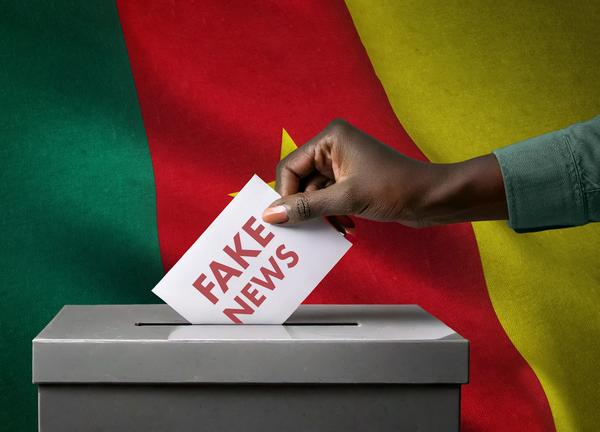In January 2024, 62.3 % of the world's population used social networks. On platforms like Facebook, X (formerly Twitter), Instagram, Whatsapp or Tiktok, information is spreading and widely. This makes these networks ideal vectors for the spread of false information (Fake News). A fake news is fallacious or false information, intended to deceive public opinion.
It is a tool used in the information war, at different levels (local or international) and in different areas (politics, security, etc.). Fake news can be disseminated to influence the course of an election , to stir up violence and polarize communities, etc.
Boot accounts: What are we talking about?
Fake News broadcast is facilitated by the use of boots.
On social networks, bots are often used to animate false accounts thanks to the automation of actions such as: publishing messages, like posts, following accounts or sharing information. Boots play a crucial role in the amplification of disinformation.
False accounts VS Automated accounts: what differences?
A false account is an online profile created with false information. It is a fictitious identity used on social networks a user who is not formally identified. The purpose of a false account is to usurp an identity, to manipulate, to deceive or influence.
For years in Côte d'Ivoire, "grazers" have been professionals in the sentimental scam on the Internet. They usurp the identity of men and women on social networks and come into contact with fragile people in a psychological, often European or American level. They promise their victim a great love story and end up emptying their bank account.
An automated account (also called BOT) is an online profile managed by a computer program to carry out actions independently, without human intervention. Automated accounts can be used to interact with other users, publish content, etc. Its purpose is to quickly and massively broadcast a message.
In 2019, the general elections in Nigeria were widely marked by the Fake News. False accounts have been used to disseminate false information on social networks such as X, Facebook and Whatsapp, concerning rumors of electoral fraud, violence and manipulation of results.
Social Bots: Technologies and operation
There are social boots special to certain social networks such as X and Instagram. A Twitter Bot is a type of social bot specifically designed for X. It is adapted to the particularities of the platform and can in particular publish tweets, respond to mentions, love or retweet messages, etc.
An Automated Instagram account is a type of social bot specifically designed for Instagram. It is adapted to the peculiarities of the platform and can in particular publish photos, videos or reels, subscribe or unsubscribe from users, love publications, etc.
To function, social bots use artificial intelligence (AI) and automation.
Regarding AI, bots use natural language treatment (NLP) and machine learning (ML). The NLP allows bots to recognize, understand and generate text and speech in a fluid way. This allows him to interact directly with humans. The ML allows the bots to learn without having been planned specifically for this purpose. They improve over time by learning from their past interactions. The ML allows the bots to learn without having previously been specifically scheduled for this purpose.
Regarding automation, bots use programming interfaces (API) and scripts. An API allows a computer to request information from another computer, by internet. Concretely, an API allows a bot to connect to different social networks. The scripts are programs responsible for carrying out a pre-defined action and therefore makes it possible to automate specific tasks such as sending messages or publication of content.
Using these different technologies, the Social Bot will be able to create accounts on social networks. Once the accounts have been created, you have to program interactions to pretend to be an average user.
Uses of bots in disinformation
Boots play a crucial role in disinformation. First of all, they allow the massive dissemination of Fake News. They artificially increase the commitment of content by generating a large number of likes, sharing and comments in a short time to make it viral. They then make it possible to manipulate trends by creating false popular movements or hashtags, we then speak of astroturfing . These two uses make it possible to give the impression that a message is widely accepted. This can lead the human user to consider this message as being credible and it is then possible to manipulate public opinion and influence political and social debates. The past years, on the African continent, the use of bots has increased and has become more sophisticated. In 2018, in the Nigeria presidential elections, surveys revealed that an assistant to the president was involved in the broadcasting of defamation campaigns against Atiku Abubakr, the opposition leader, by publishing images and falsified information, as for example by alleging that Autiku Abubakr was involved in children's sales campaigns.
Case study: Kopeechka and the creation of false accounts
Kopeechka (“a part” in Russian), is a computer tool to create automated accounts on social networks en masse. This tool makes it possible to bypass the two main obstacles relating to the creation of account on digital platforms: verification by email and telephone. This Russian software can thus be used to carry out disinformation, spam and malware dissemination campaigns.
One of the main uses of Kopeechka and its bots is interference in the elections and the manipulation of public opinion. In Africa, many countries have paid the price. In 2018, the general elections in the Democratic Republic of Congo were marked by strong political tensions and accusations of manipulation of results. Reports then revealed that bots of bots created using Kopeechka were used to influence political debates and manipulate the opinions of voters before the presidential election. A scenario similar to take place during the 2019 Nigerian presidential elections and the Kenyan presidential elections of 2017 and 2022.
The Kopeechka affair highlighted several aspects of cybersecurity and digital manipulation, raising concerns about the way information can be used to destabilize democracies and distort electoral processes.
How to deal with bots and false accounts?
Faced with these bots of bots, several platforms like X, Facebook, and Instagram have intensified their efforts to identify them and limit their influence. These platforms set up tools such as AI algorithms responsible for detecting suspicious behavior that would betray the existence of a bot, the deletion of long -term inactive accounts, two factors authentication, etc. These tools use analysis methods based on suspicious behavior and other indicators to distinguish human interactions from the interactions generated by bots.
Users can also fight these boots using detection tools such as Twitter Bot Checker, Botomet and Hoaxxy. They can also observe the activity of suspect accounts and analyze the frequency of publications (bots often publish at an excessive frequency), the content (bots tend to publish the same message or very similar messages repeatedly), the lack of human response (automatic responses like "thank you", "well played", etc.), etc.
Governments and organizations also play a role in the fight against bots and false accounts. Fact-checking (verification of facts) is to analyze and verify affirmations or information by confronting them with reliable and verifiable sources. Governments set up legislation on the fight against bots, such as Bots Act (Better Online Ticket Sales Act) in 2017 in the United States.
False Bots accounts: a powerful disinformation tool
Boots are key players in the dissemination of fake news on social networks, amplifying disinformation and notably influencing political and societal events. The African continent is no exception to the rule . The example of Kopeechka shows how these tools can be used to manipulate public opinion and disrupt electoral processes. Faced with this threat, platforms strengthen their detection systems, but users, governments and Fact-Checking organizations can also play a role in this struggle. A combination of technologies, vigilance and legislation can help limit the impact of bots and thus preserve the authenticity of information shared online.









